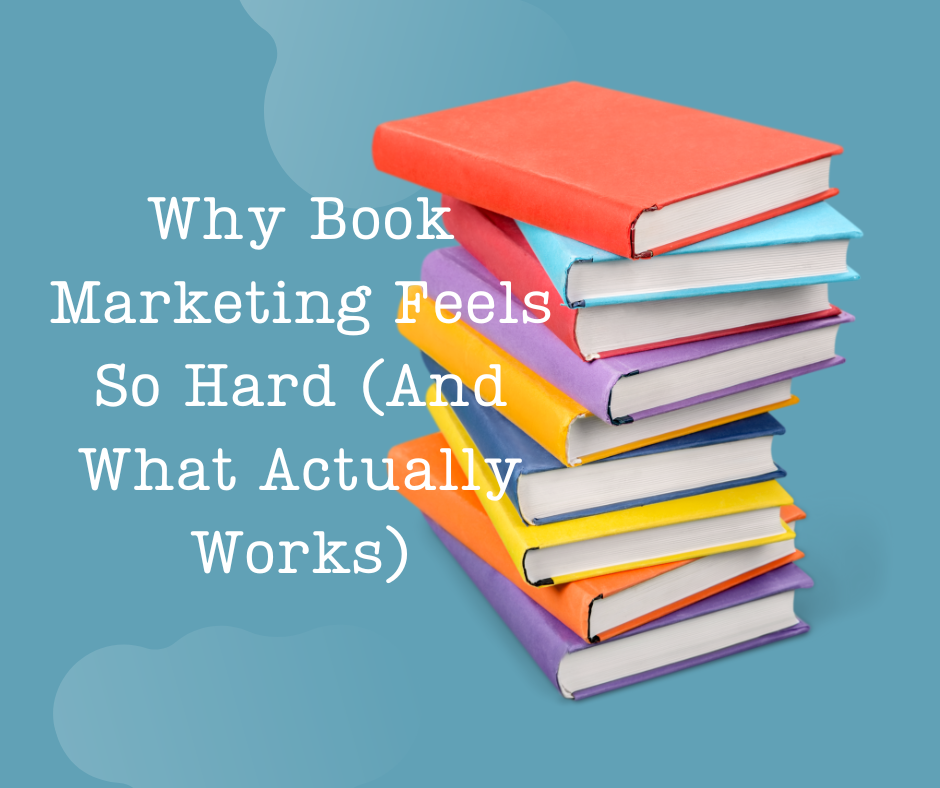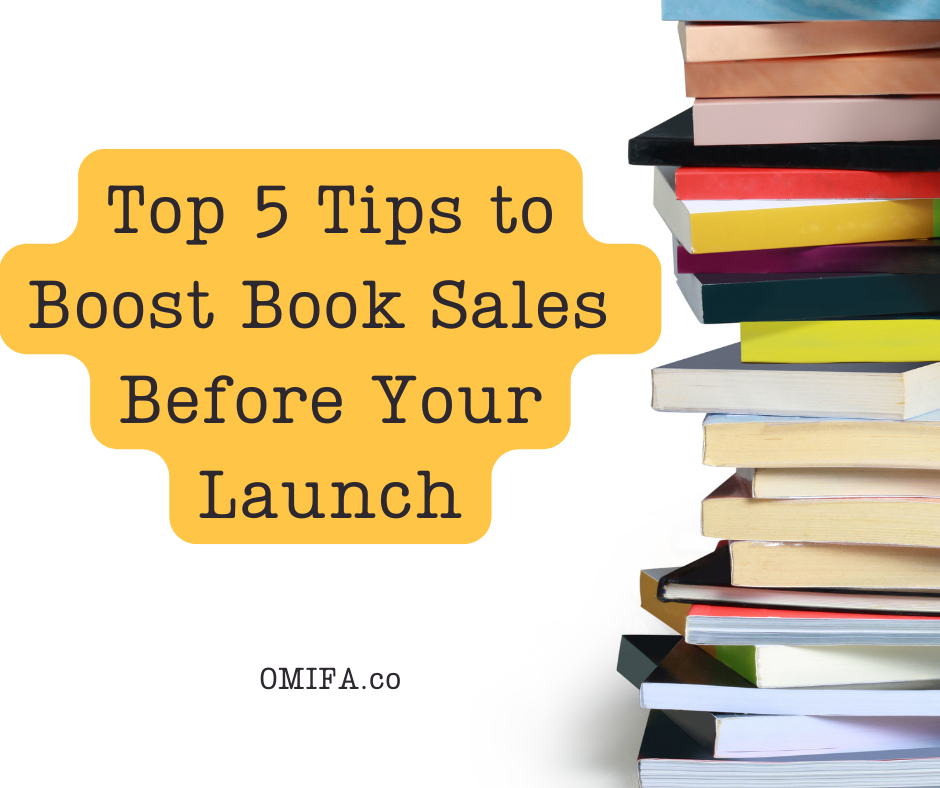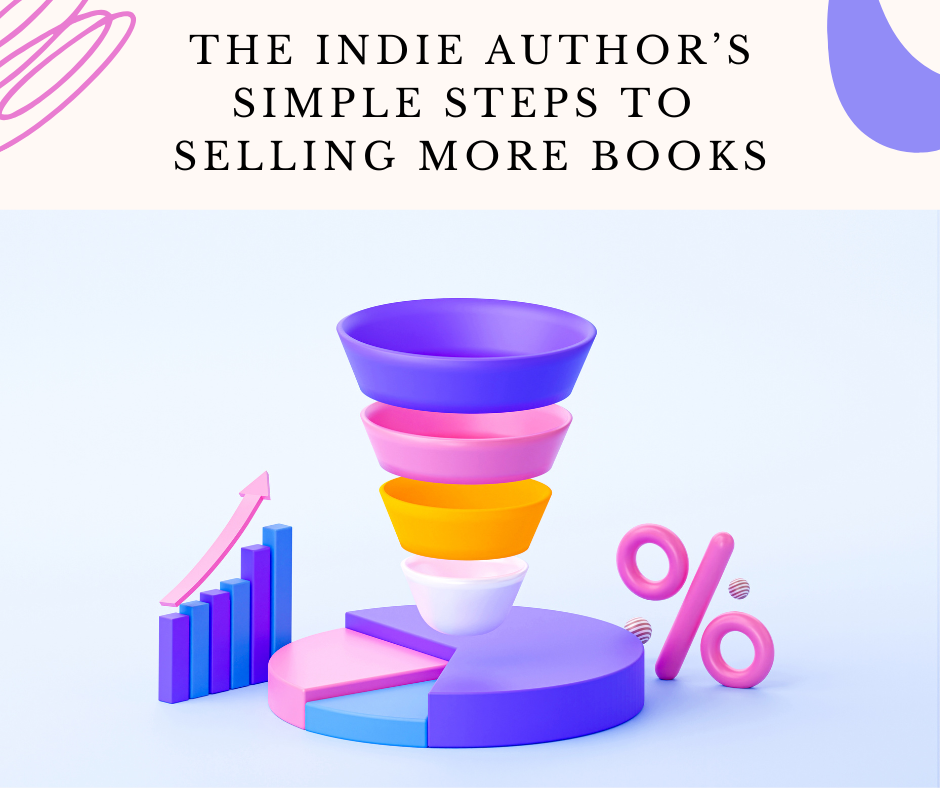Why Book Marketing Feels So Hard (And the Truth About What Actually Works)
Ever feel like book marketing is way harder than it should be?
You’re not alone.
Most indie fiction authors don’t struggle because they’re “bad” at marketing.
They struggle because the advice they’ve been given wasn’t made for them.

Let’s talk about why so much marketing advice leaves you feeling frustrated, exhausted, and still not selling books, and what actually works instead.
The Problem With Most Book Marketing Advice
Have you ever Googled “how to market my book” or watched a few YouTube videos on book promotion?
If so, you’ve probably heard advice like:
“You need to be posting on Instagram every day.”
“TikTok is the only way to sell books now.”
“If you’re not running Amazon ads, you’ll never make sales.”
“Just be consistent! Keep showing up, and the readers will come!”
And while none of these things are completely wrong, they miss the bigger picture, especially for fiction authors.
Why This Kind of Advice Doesn’t Work for Fiction Authors
The biggest issue?
Most marketing advice is made for influencers, coaches, and nonfiction authors.
📌 Nonfiction authors sell books because people want to learn from them. They can create quick, educational content and easily build trust as an expert. (I know, this is what I’ve done. 😉)
📌 Influencers & content creators sell because their audience already follows them for their personality, so when they drop a book, their followers buy out of loyalty.
📌 Fiction authors? We sell books because readers fall in love with our stories.
And that means that the usual “grow a following and sales will come” strategy doesn’t always work for us.
Readers don’t usually buy fiction because they saw a pretty Instagram post. They buy because they’re excited about a story and feel connected to it.
So if you’ve been throwing content out there, hoping to grow an audience, and wondering why it’s not translating to book sales ~ it’s not you. It’s the strategy.
What Actually Sells Fiction Books?
Let’s simplify this.
🔹 Readers buy books because they’re emotionally invested in the story.
🔹 They stay loyal to authors because they feel a connection.
🔹 They keep buying because they’re excited about what’s coming next.
So, your book marketing should focus on three things:
✅ Getting in front of the right readers (not just any audience)
✅ Building excitement about your stories (so they want to keep reading)
✅ Making it easy for them to buy (without feeling like you’re constantly “selling”)
It’s not about being everywhere. It’s about being intentional with where and how you show up.
What If Marketing Didn’t Feel Like a Full-Time Job?
Here’s the thing:
Marketing doesn’t have to take over your life.
🚫 You don’t need to spend hours on social media.
🚫 You don’t need to feel like you’re constantly chasing trends.
🚫 You don’t need to exhaust yourself trying to “keep up.”
What you do need is a simple, streamlined approach that helps you attract readers, engage them, and turn them into fans without feeling like you have to be online 24/7.
Because book marketing isn’t about doing more. It’s about doing what works.
📚 PS: If you’re tired of feeling like you’re marketing your books the wrong way and want a strategy that actually works for indie fiction authors, check out the Indie Fiction Authors Marketing Momentum Membership. Inside, we focus on marketing smarter ~ not harder ~ so you can reach more readers without burning out.



